- Home
- Rae Carson
Like a River Glorious Page 31
Like a River Glorious Read online
Page 31
“This is what it’s like, Jeff!” I say. “When I call the gold to me. Do you see? Isn’t it fine?”
“I see.”
But I get the sense he’s not looking at the sky at all.
“Lee—” he begins, but I interrupt.
“Don’t ask me to marry you again,” I say. “Not even one more time.”
“I . . . Okay.” His voice is suddenly small.
“Because I’m going to ask you.”
His breath catches.
I turn to face him. “Remember when we left for Sacramento the first time? Before Dilley and his men found us? You told me I was in love with you.”
“I remember.”
“Well, I reckon you were right.”
“Oh, Lee.” He wraps his arms around me and pulls me close, nuzzling my hair.
“So, is that a yes?” I say, though it comes out muffled against his chest.
“You haven’t asked me anything yet.”
“Oh. Right.”
I step away just so I can take in his face—his black eyes that have so much kindness in them. His perfect mouth. The way his hair curls at the nape, just so. “Jefferson McCauley Kingfisher, will you do me the honor of becoming my husband?”
Finally his grin is back. “Even though I won’t ever own property?”
“Especially because of that. Jeff, all this time I thought I was coming to California so I could finally have something of my own. But I had it all along. I had you. And now I have Jasper and Tom and Henry, Becky and her kids, the Major, Hampton, maybe even Mary. My home is not a place; it’s people.”
He tips up my chin with a forefinger. “It’s about blasted time you came to your fool senses,” he murmurs, then he bends down and kisses me, and it’s better than fireworks, better even than sparkling gold.
Reluctantly I break away to say, “So is that a yes?”
“That’s a hell yes.”
“What a relief. I was afraid that after everything I’d put you through, you’d say no.”
Jefferson laughs. “Leah, surely you know? You’ve been the only girl for me since we were five years old.”
Tom and Henry sidle over, and I can tell they’re curious about what just happened, but neither Jefferson nor I offer them anything yet. I want to keep this moment precious, just between us, for a little longer.
The fireworks swell to a climactic finale, as the violins play “O Christmas Tree.” Then the lights and the music cease, and everyone begins to drift away. “Let’s go, Golden Goddess,” Jefferson says. “Time to go home.”
I punch him in the shoulder. “Never call me that again.”
Author’s Note
Historical fiction—even when it has a touch of magic—requires a delicate balancing act between fact and fantasy, and to best tell Lee’s story, I took some minor historical liberties. For instance, Hiram Westfall establishes a tunnel mine in 1849, even though hard rock mining for gold quartz isn’t recorded on this scale until 1851. Likewise, Thanksgiving did not become a national holiday until 1863, but it was widely celebrated in New England before then, and I thought that Hiram, being from Massachusetts, might have grown up with it. Also, Hiram discusses collecting bounties on Indian scalps, even though California’s governor Peter Burnett did not call for “a war of extermination” against the Indians until 1851, and the state did not begin paying bounties until after that . . . but I would have felt remiss to ignore this atrocity.
I chose to place some political wrangling in Sacramento, because doing so eased logistical plot burdens and because Sacramento was a geographic and political center long before it became the official state capital in 1854. The first ball in gold country took place on December 25, 1849, at Mormon Island, not in Sacramento as portrayed in this book; Mormon Island is largely submerged beneath Lake Folsom now, although parts of it have reappeared due to the recent drought. I don’t know how prevalent cross-dressing was at formal dances like these, but numerous written Gold Rush accounts and contemporary illustrations show men dressed as women when dancing. Without hearing those accounts in their own voices, I could only speculate about their orientations and intentions.
The plight of Muskrat and his friends was drawn from the fact that the Gold Rush happened at the expense of California’s indigenous population, through enslavement, the confiscation of their tribal lands, and destruction of their traditional ways of life. In 1845, more than 150,000 Native Americans lived in California. By 1870, that population had been reduced through starvation, disease, and murder to less than 30,000. It is entirely appropriate to refer to this as genocide. To learn more, I recommend reading Albert L. Hurtado’s Indian Survival on the California Frontier (Yale University Press, 1990 edition).
Even so, it’s important to acknowledge the active, vibrant communities of Native Americans still living in California. For the perspective of California’s indigenous people, given in their own voices, I also recommend The Way We Lived: California Indian Stories, Songs & Reminiscences, edited by Malcolm Margolin (Heyday Books, published in conjunction with the California Historical Society, 1992).
In creating the character of Mary, I hoped to honor the thousands of women like her, many of whom found ways to escape their situations and invent different lives for themselves. Because the oversexualization of Asian American women in modern media and culture has such deep and unpleasant roots in history—by the 1870s, 70 percent of all Chinese women in San Francisco were prostitutes—I strove to acknowledge this aspect of the Gold Rush era without perpetuating harmful stereotypes. This means I may have erred on the side of caution, insufficiently addressing the atrocities and indignities Mary likely would have suffered. A hard-hitting academic history on this subject is Unsubmissive Women: Chinese Prostitutes in Nineteenth-Century San Francisco, by Benson Tong (University of Oklahoma Press, 1994).
California entered the Union as a free state on September 9, 1850, but slavery and the treatment of free African Americans as slaves continued. Despite this, many African Americans—both freemen who rushed west like James “Free Jim” Boisclair, as well as escaped slaves like Hampton who worked to buy their freedom—played key roles in the Gold Rush and used it to create opportunities for themselves and their families. I recommend The Negro Trail Blazers of California, by Delilah L. Beasley, originally published in 1919 but reprinted several times recently, as an important resource and collection of primary documents.
In 1849, only 3 percent of Gold Rush immigrants to California identified as female. To capture the experiences of women like Lee and Mrs. Joyner, I relied heavily on They Saw the Elephant: Women in the California Gold Rush, by JoAnn Levy (University of Oklahoma Press, 1990). For general background on this period of California history, I frequently found myself thumbing through the pages of The Age of Gold: The California Gold Rush and the New American Dream, by H. W. Brands (Doubleday, 2002).
Like a River Glorious has been improved by the contributions of numerous people. I want to thank the librarians, curators, and docents of the following institutions, where I did much of my research:
•The California Historical Society
(http://www.californiahistoricalsociety.org) in San Francisco
•The Chinese Historical Society of America
(http://chsa.org) in San Francisco
•Sutter’s Fort State Historic Park
(http://www.suttersfort.org) in Sacramento
•The Sacramento History Museum
(http://sachistorymuseum.org), especially the permanent exhibits “Coming to California and the Lure of Gold” and “Gold, Greed, & Speculation: The Beginnings of Sacramento City”
•Though not focused on Gold Rush history, the Heard Museum of American Indian Art & History
(http://heard.org) in Phoenix is a valuable resource in general
I’m also deeply grateful to the following readers for their contributions: My agent, Holly Root, was an endless source of encouragement and guidance in navigating the path of this novel. My editor, Mar
tha Mihalick, exhibited patience, humor, and intelligence through multiple drafts. Marlette Grant Jackson of the Yurok tribe of Northern California holds a degree in Native American Studies and works in the Indian Teacher Education Personnel Program at Humboldt State University; her feedback was invaluable. Albert L. Hurtado, formerly the Paul H. and Doris Eaton Travis Chair in Modern American History at the University of Oklahoma and a leading expert on Native Americans and the history of the western frontier, read the manuscript for historical accuracy. Jay Cravath, PhD, applied his expertise in curriculum and cultural research to the text. Erika Gee, M.S. Ed., of the Chinatown Community Development Center, and my friends and fellow authors Samantha Ling and Heidi Heilig all offered essential insights into the perspectives of Chinese American women and their connections to the Gold Rush.
This is a better book for all their contributions. Any remaining errors of fact or perspective are my own.
If you decide to write historical fiction, I recommend being married to someone who is both an editor and a historian. My husband, C. C. Finlay, was endlessly supportive, whether we were researching, visiting museums and historical sites, or doing the backbreaking work of panning for gold in the Sierra foothills.
My uncle David “Jericho” Yarbrough is the one who took us gold mining and taught us how to pan and sluice using traditional methods. I owe him, not just for that but for sharing his love of California and the outdoors throughout my childhood. Uncle Jericho, this one is for you.
Back Ad
DISCOVER
your next favorite read
MEET
new authors to love
WIN
free books
SHARE
infographics, playlists, quizzes, and more
WATCH
the latest videos
TUNE IN
to Tea Time with Team Epic Reads
About the Author
RAE CARSON is the author of the bestselling and award-winning Girl of Fire and Thorns series. Her books tend to contain adventure, magic, and smart girls who make (mostly) smart choices. Originally from California, Rae Carson now lives in Arizona with her husband.
www.raecarson.com
Discover great authors, exclusive offers, and more at hc.com.
Books by Rae Carson
The Girl of Fire and Thorns
The Crown of Embers
The Bitter Kingdom
The Shadow Cats
The Shattered Mountain
The King’s Guard
The Girl of Fire and Thorns Complete Collection
Walk on Earth a Stranger
Like a River Glorious
Credits
Cover art copyright © 2016 by Neil Swaab
Cover design by Neil Swaab
Cover photographs copyright © 2016 by Malgorzata Maj (Arcangel Images); James Wheeler, Valentine Valkov, Kavram, Anna Morgan and Photo.Lux (Shutterstock)
Copyright
This book is a work of fiction. References to real people, events, establishments, organizations, or locales are intended only to provide a sense of authenticity, and are used to advance the fictional narrative. All other characters, and all incidents and dialogue, are drawn from the author’s imagination and are not to be construed as real.
LIKE A RIVER GLORIOUS. Copyright © 2016 by Rae Carson. Map copyright © 2016 by John Hendrix. All rights reserved under International and Pan-American Copyright Conventions. By payment of the required fees, you have been granted the nonexclusive, nontransferable right to access and read the text of this e-book on screen. No part of this text may be reproduced, transmitted, decompiled, reverse-engineered, or stored in or introduced into any information storage and retrieval system, in any form or by any means, whether electronic or mechanical, now known or hereafter invented, without the express written permission of HarperCollins e-books.
www.epicreads.com
Library of Congress Cataloging-in-Publication Data is available.
EPub Edition © September 2016 ISBN 9780062242969
ISBN 978-0-06-224294-5 (trade ed.)
16 17 18 19 20 21 PC/RRDH 10 9 8 7 6 5 4 3 2 1
FIRST EDITION
Greenwillow Books
About the Publisher
Australia
HarperCollins Publishers Australia Pty. Ltd.
Level 13, 201 Elizabeth Street
Sydney, NSW 2000, Australia
www.harpercollins.com.au
Canada
HarperCollins Canada
2 Bloor Street East - 20th Floor
Toronto, ON M4W 1A8, Canada
www.harpercollins.ca
New Zealand
HarperCollins Publishers New Zealand
Unit D1, 63 Apollo Drive
Rosedale 0632
Auckland, New Zealand
www.harpercollins.co.nz
United Kingdom
HarperCollins Publishers Ltd.
1 London Bridge Street
London SE1 9GF, UK
www.harpercollins.co.uk
United States
HarperCollins Publishers Inc.
195 Broadway
New York, NY 10007
www.harpercollins.com

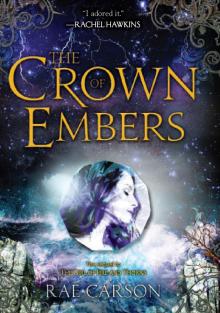 The Crown of Embers
The Crown of Embers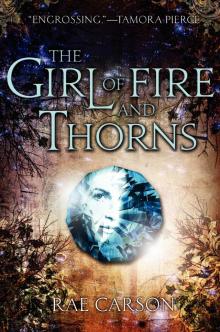 The Girl of Fire and Thorns
The Girl of Fire and Thorns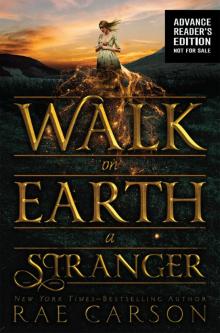 Walk on Earth a Stranger
Walk on Earth a Stranger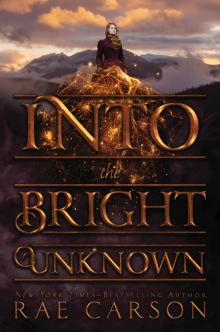 Into the Bright Unknown
Into the Bright Unknown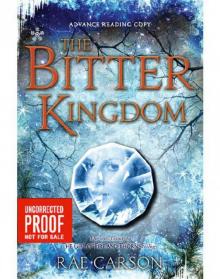 The Bitter Kingdom
The Bitter Kingdom The Rise of Skywalker
The Rise of Skywalker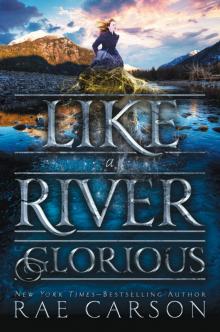 Like a River Glorious
Like a River Glorious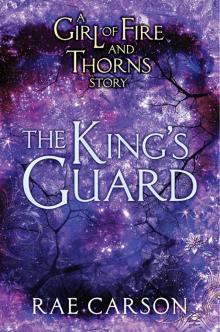 The King's Guard
The King's Guard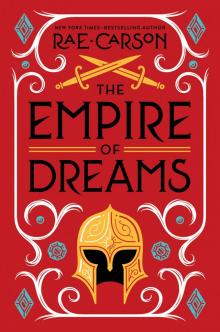 The Empire of Dreams
The Empire of Dreams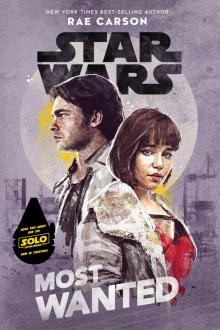 Most Wanted
Most Wanted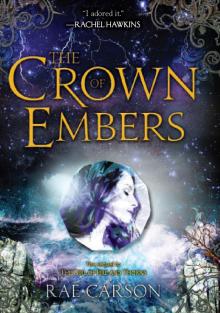 The Crown of Embers fat-2
The Crown of Embers fat-2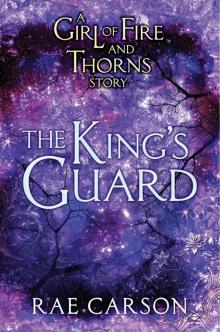 The King's Guard (fire and thorns)
The King's Guard (fire and thorns)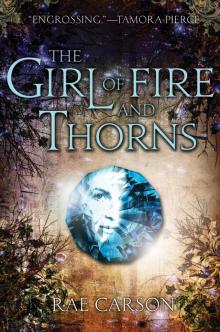 The Girl of Fire and Thorns fat-1
The Girl of Fire and Thorns fat-1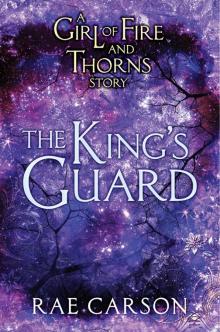 Fire and Thorns 00.7: King's Guard
Fire and Thorns 00.7: King's Guard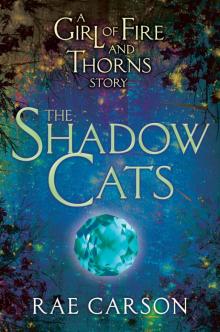 The Shadow Cats (fire and thorns )
The Shadow Cats (fire and thorns )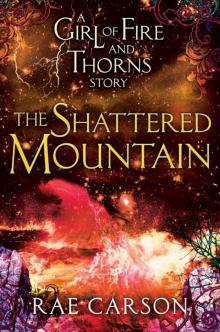 The Shattered Mountain (fire and thorns)
The Shattered Mountain (fire and thorns)